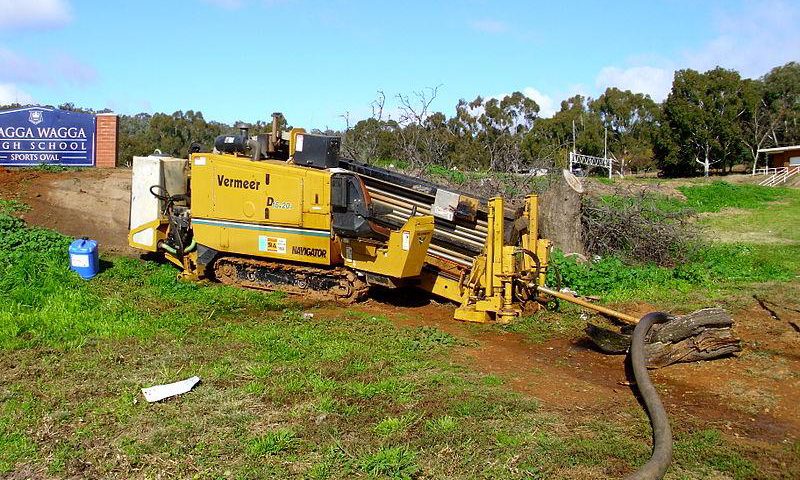Directional drilling is revolutionizing the field of subsurface exploration and utility deployment, progressing remarkably over the recent decades. As sectors like petroleum, public utilities, and renewable energy continue to innovate, grasping the intricacies of this drilling process grows more vital. For those unacquainted, directional drilling permits operators to drill down and then direct the drill bit across, forming boreholes that navigate complex subterranean conditions with accuracy. This approach optimizes resource extraction but also addresses challenges such as conservation and urban infrastructure needs.
In this article, we will delve into the development of directional drilling technology, examine its multiple applications, and examine the technical aspects that establish it as a leading choice across different fields. We will point out the benefits it provides over conventional drilling techniques, including minimized surface impact and reduced costs, while uncovering the significant role it occupies in advancing sustainability initiatives. Whether you are a seasoned professional or new to this area, our thorough guide is designed to offer a better grasp of directional drilling and its relevance in the swiftly changing environment of today.
Grasping Navigational Drilling
Navigational boring is a method that enables for the boring of wells at different inclinations rather than just only straight down. next permits operators to reach target reservoirs that may be located far away from the upright hole. By modifying the inclination and orientation of the bore tool, angled drilling can reach oil and gas reserves, install utilities, or construct pathways for conduits without needing to drill directly on top of the target point.
The core concept behind navigational boring is to employ modern technologies that enable for precise management over the boring trajectory. Tools such as pumping systems and innovative bore tools facilitate the navigation of the bore as it climbs, drops, or curves laterally. Additionally, ongoing oversight of the boring process with bore tracking systems guarantees that workers keep on target, boosting effectiveness and lowering the risk of costly blunders.
This method has revolutionized various industries by enabling projects in areas that would be problematic or impossible with standard upright drilling techniques. Whether it's accessing resources underneath metropolitan structures or reducing surface interference in protected locations, angled drilling has turned into essential in contemporary building and retrieval. As the field advances, so do the methods and approaches, increasingly boosting the potential of angled drilling.

Benefits and Applications
Directional borehole technology offers multiple advantages over conventional drilling techniques, mainly through its ability to reduce ground disturbance. By drilling at various angles, operators can access specific sites without the need for extensive surface clearing, protecting the surrounding ecosystem. This technique is highly advantageous in cities where land is scarce and existing infrastructure must be protected. As https://lampwrench4.werite.net/beneath-the-surface-the-art-of-directional-drilling , directional drilling helps maintain the surroundings while allowing for effective material retrieval and infrastructure setup.
The applications of directional drilling extend beyond oil and gas extraction. It plays a critical role in the field of utility deployment, enabling the effective installation of water, wastewater, and telecommunications lines. This technology allows for under-road and under-river installations, eliminating the necessity of disruptive open-cut excavations. Additionally, directional drilling is becoming increasingly important for green energy initiatives, like geothermic and wind power, where accurate boring methods are needed to maximize energy efficiency and minimize ecological impacts.
As the call for eco-friendly and efficient infrastructure expands, the benefits of directional drilling become more evident. Its ability to reduce the environmental footprint of drilling operations makes it an optimal choice for fragile areas, such as wetlands and high-density regions. Furthermore, the cost reductions associated with directional drilling, combined with its technological innovations and monitoring systems, position it as a key tool in future construction and power initiatives. The continuous development of directional drilling techniques will shape the future of utility management and resource handling for an extended period of time.
Future Advancements in Directional Drilling
The prospects of horizontal drilling is poised for important innovations driven by emerging technologies. AI and machine learning are becoming critical to improving drilling operations, enabling better estimates of drilling trajectory and minimizing the risk of costly errors. By analyzing large amounts of data in actual time, these technologies can enhance the effectiveness of drilling processes and refine decision-making, leading to safer and more streamlined operations.
In addition to AI, the incorporation of cutting-edge devices and applications is transforming how directional drilling projects are managed. These tools facilitate live bore tracking and monitoring, allowing engineers to evaluate performance metrics and ecological consequences more accurately. The continued advancement of these systems will most likely lead to greater precision in drilling techniques, which is especially crucial in metropolitan environments where space is scarce and the risks are significant.
As the sector shifts towards green practices, there is a growing emphasis on directional drilling as a means to support green infrastructure projects. Breakthroughs in drilling fluids, waste reduction practices, and energy-efficient drilling techniques are becoming more prevalent. The focus on minimizing the environmental footprint of drilling activities correlates with global sustainability goals, making directional drilling not just a reasonable choice and also a crucial component of future infrastructure development.
